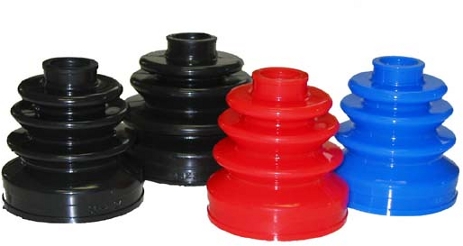What about split-boots?
(or why we don't sell them)
Glue-together and bolt-together split-boots are available through various after-market suppliers that claim to eliminate the need to remove the driveshaft and CV joint when a boot needs replacement. In theory, using a split-boot can eliminate a lot of "unnecessary" labor associated with boot service. In practice, the split-boot has several serious drawbacks.
First, there is the question of reliability. The glue-together seam must be perfectly clean when the glue is applied for a good bond. A small speck of dirt or any grease on either surface will weaken the seam and may cause it to fail.
Second, the boot must be left undisturbed for up to an hour while the adhesive cures. Otherwise the seam will not hold. In the bolt-together boot, glue is not used to seal the seam. The manufacturer supplies an extra quantity of lubricant to replace grease that is continuously lost during normal operation. This necessitates periodic relubrication.
Third, Its very difficult to thoroughly clean and inspect a CV joint on the car. Some contaminated grease will remain in the bottom of the joint regardless of how much solvent is sprayed or brushed on the joint.
Fourth, and most importantly, a joint with a bad boot and contaminated grease may be damaged and need to be replaced anyway. It's impossible to detect certain types of cage damage and race wear without removing the joint from the car.
The promised labor savings of the split-boot will, therefore, often prove to be an expensive illusion. For these reasons, Raxles strongly disapproves of the split-boot! For safe and reliable service, there is no substitute for driveshaft removal and joint inspection. See our installation guide for more info.
